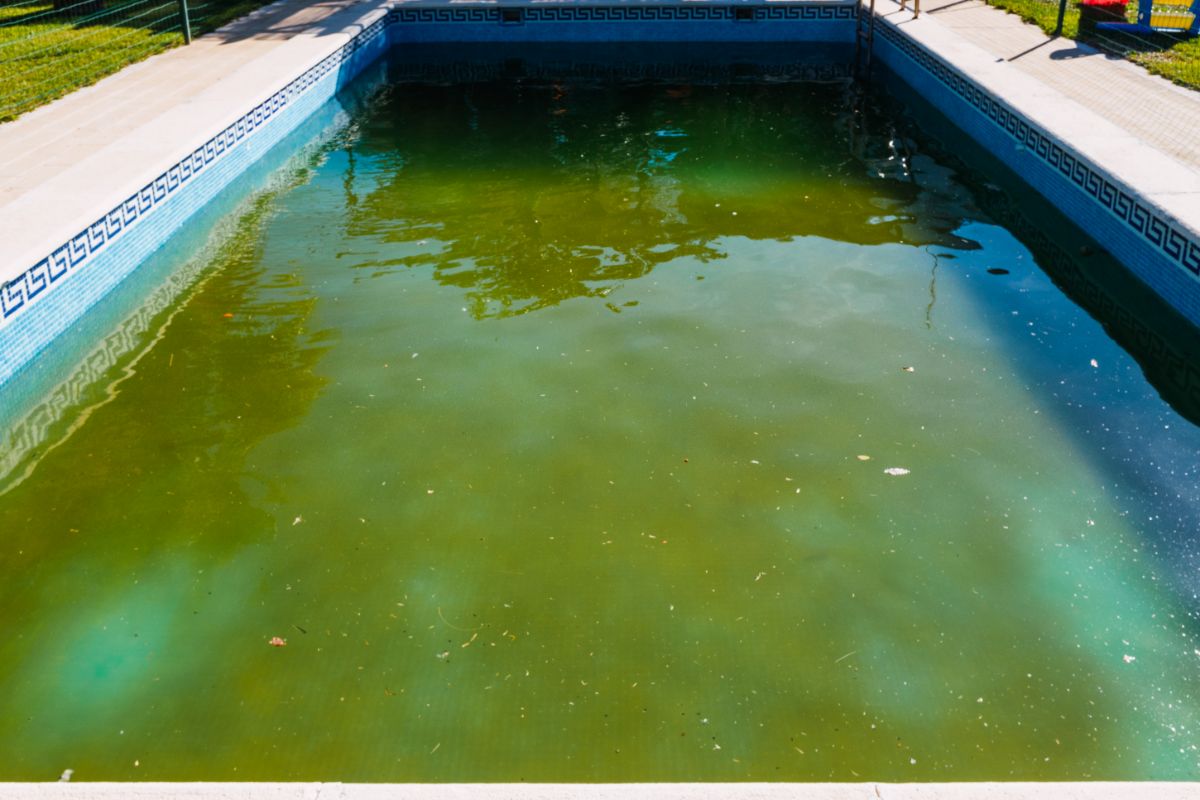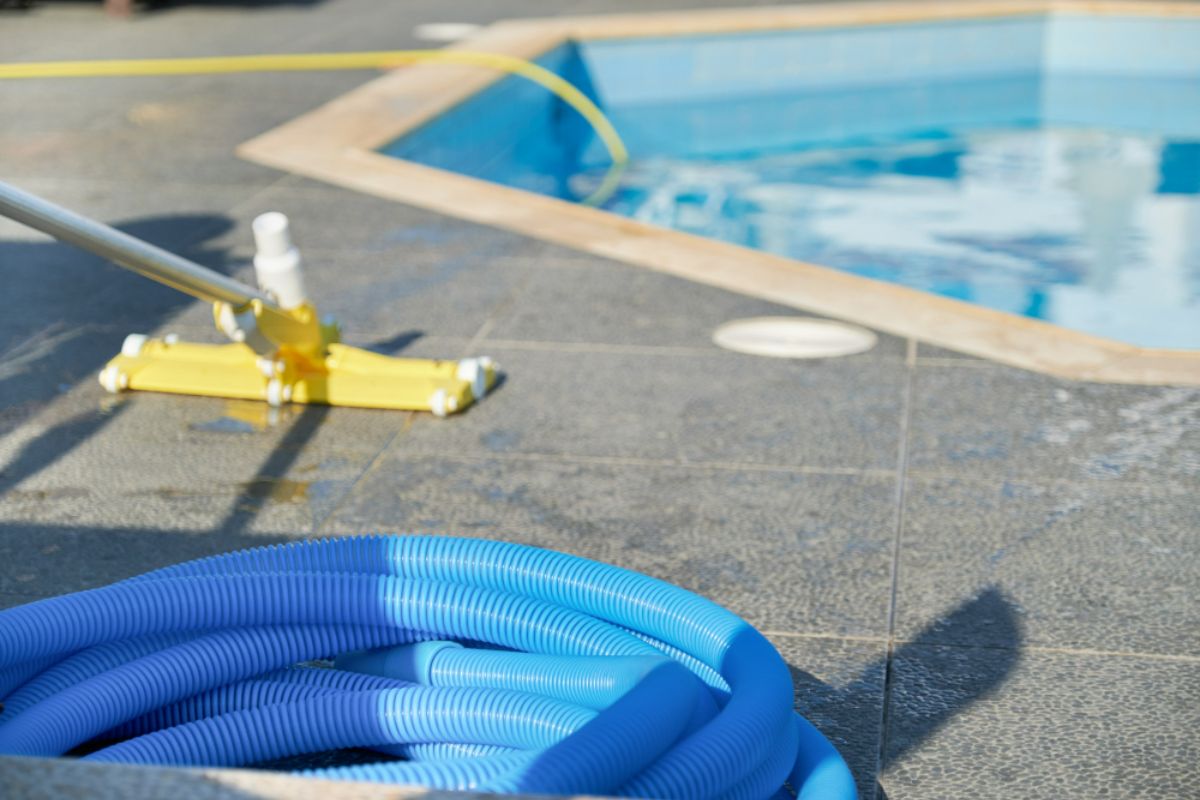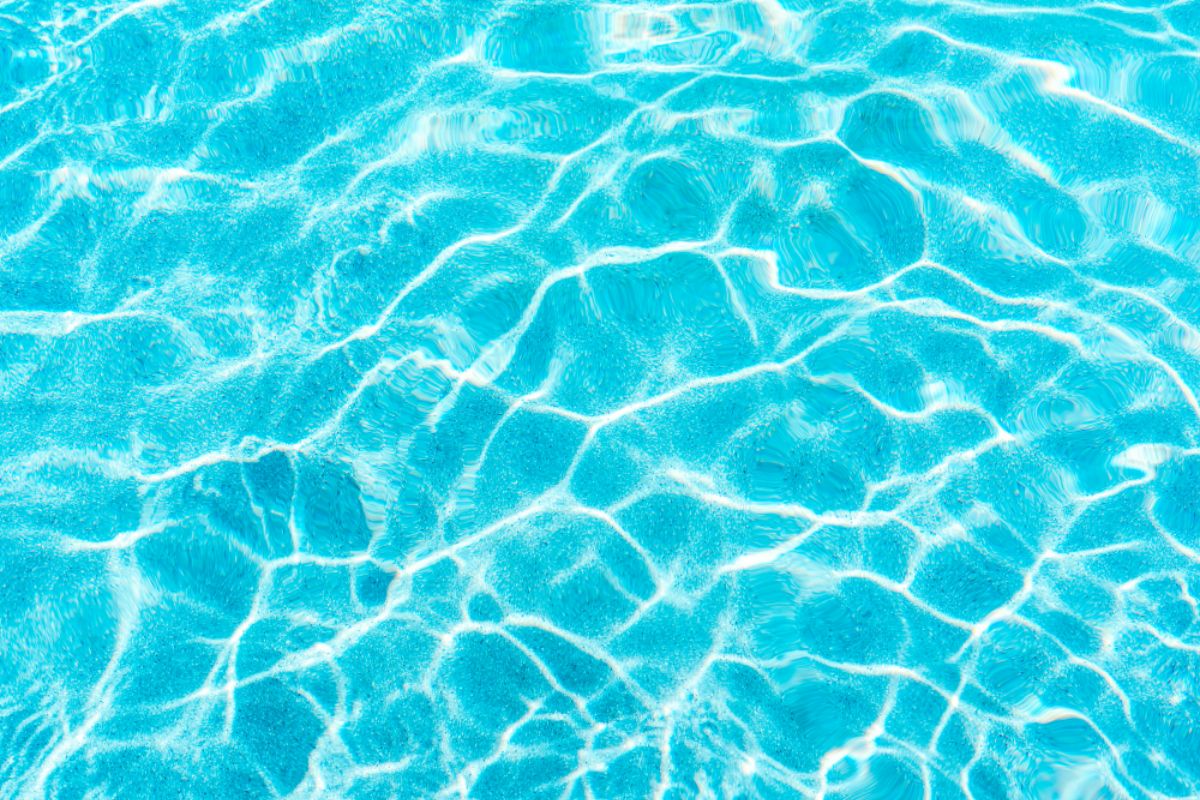How to remove algae from your pool?
- Thoroughly brush pool surfaces
- Test and balance the water
- Shock your pool
- Keep the filters running
- Test the pool again the next day
- Brush and test daily
- Frequently clean the filters
- Vacuum the dead algae
Algae spores are everywhere — which means they can easily get into your pool at any time. These pervasive pathogens can become a big problem when they start to multiply in your pool water and start growing on its walls and floor. Unfortunately, if you’re currently dealing with an algae problem, your typical pool maintenance routine won’t cut it. To get rid of this pesky green bloom, follow our step-by-step guide on how to remove algae from your pool:
What Causes Pool Algae?
Algae growth is most commonly caused by low chlorine chemicals, poor water chemistry, and bad filtration. It can also enter your pool through any swimwear or pool toys that were used in natural bodies of water (such as the beach).
If you notice the early stages of algae growth, it’s important to act fast — this will help prevent it from developing into a serious algae problem.
What Kind of Algae Does My Pool Have?
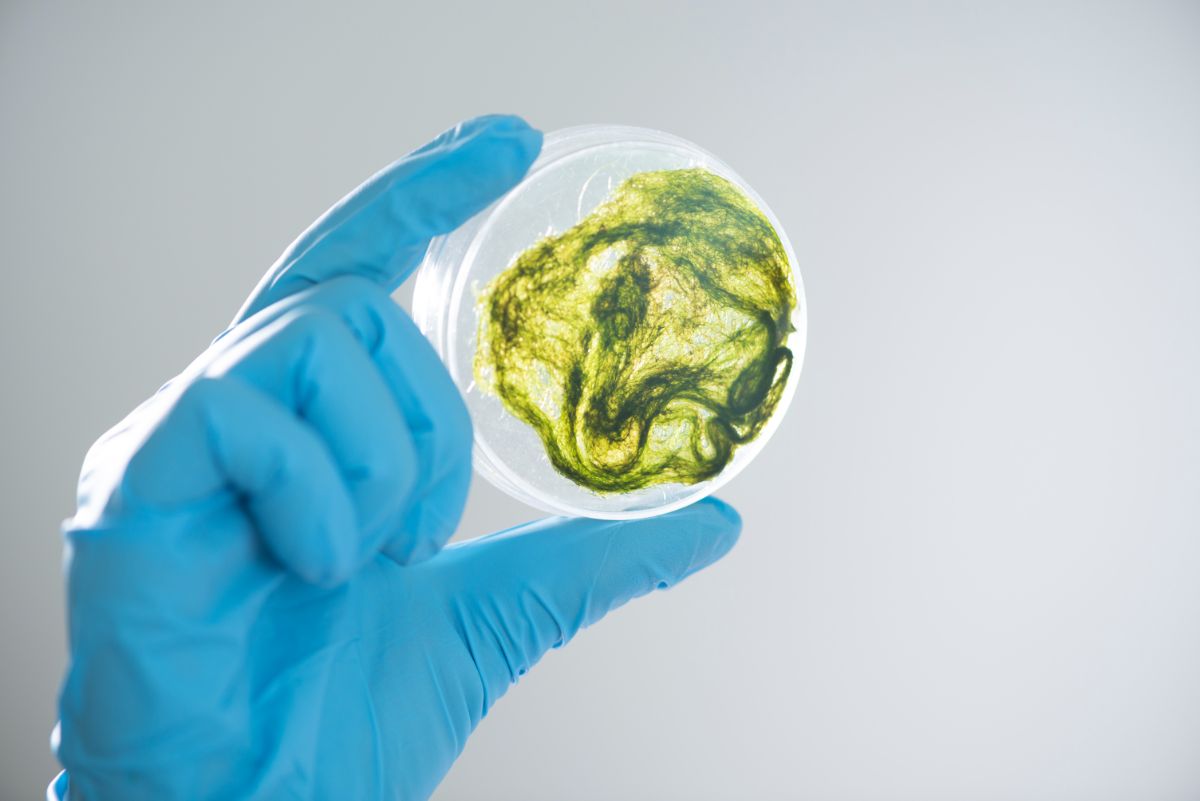
But before you can tackle this problem, you must know what kind of algae you’re dealing with. The key here is finding out what color algae are in your water:
- Green — if the algae are green, you’re dealing with the most common and the easiest type of algae to kill. However, this type also spreads quickly. Green algae can vary in color, ranging from teal green to dark green.
- Yellow — a rarer form of algae, this pathogen will look almost like globs of pollen or sand clinging to the shaded corners of your pool. Unfortunately, this algae is chlorine resistant, so you’ll have to deal with it through multiple rounds of brushing your pool and using pool shock.
- Black — the toughest to kill, this algae has roots that can dig into concrete surfaces. You’ll need several rounds of deep cleaning to tackle this, and it can grow back quickly if you’re not thorough.
How to Remove Algae From Your Pool
Now that you know what type of algae you’re dealing with, it’s time for a step-by-step guide on how to get rid of all the algae spores in your water.
Thoroughly Brush Pool Surfaces
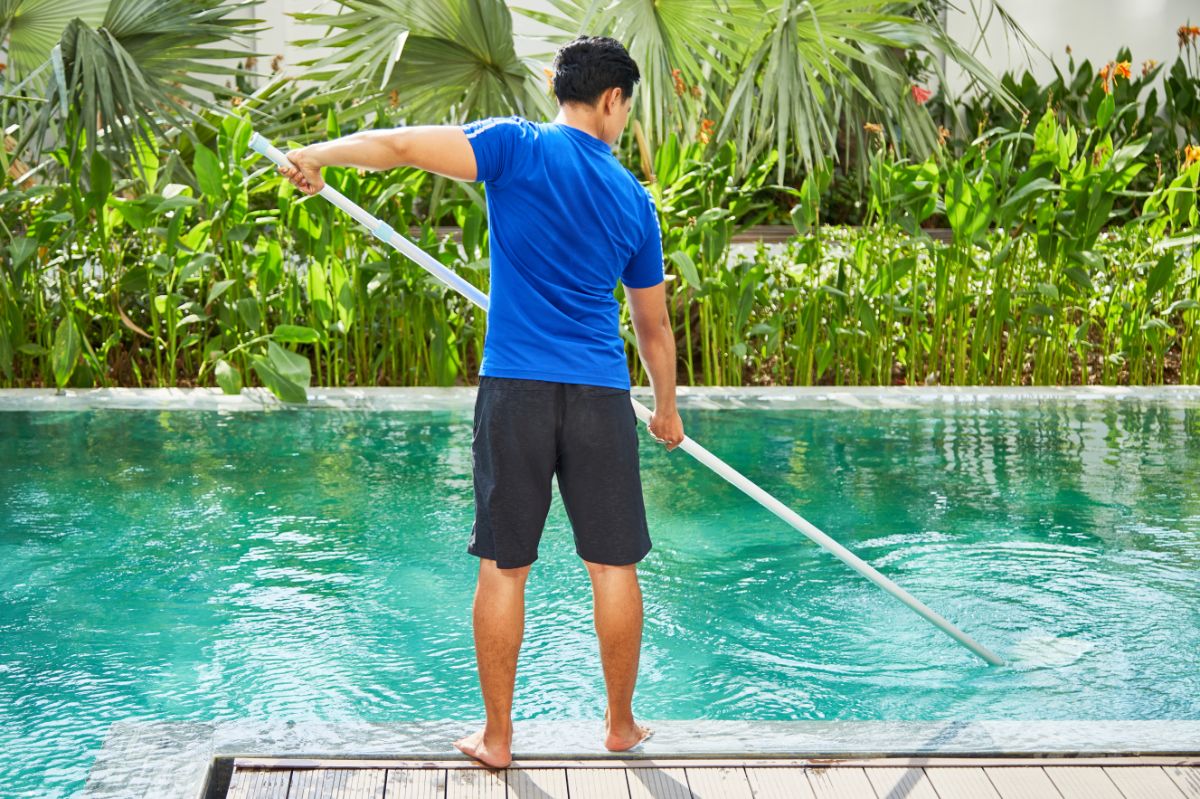
Start by scrubbing the algae off your pool surfaces. This is important because algae have protective layers — especially black algae — and scrubbing helps chlorine penetrate and kill them easier. Scrubbing will also loosen up other contaminants, so they can also be killed and filtered out.
Using a pool brush with a telescoping pole, thoroughly brush the walls, floor, steps, and other fixtures in your pool. We recommend using one with stainless steel bristles if you have a concrete or granite pool, and a nylon bristle brush for any other type of pool.
Test and Balance The Water
Use a test kit to check your water chemistry. You need to balance your alkalinity and pH levels now to ensure your pool sanitizer will be effective against the algae. High pH and low alkalinity are two factors that can inhibit its cleaning power.
Shock Your Pool
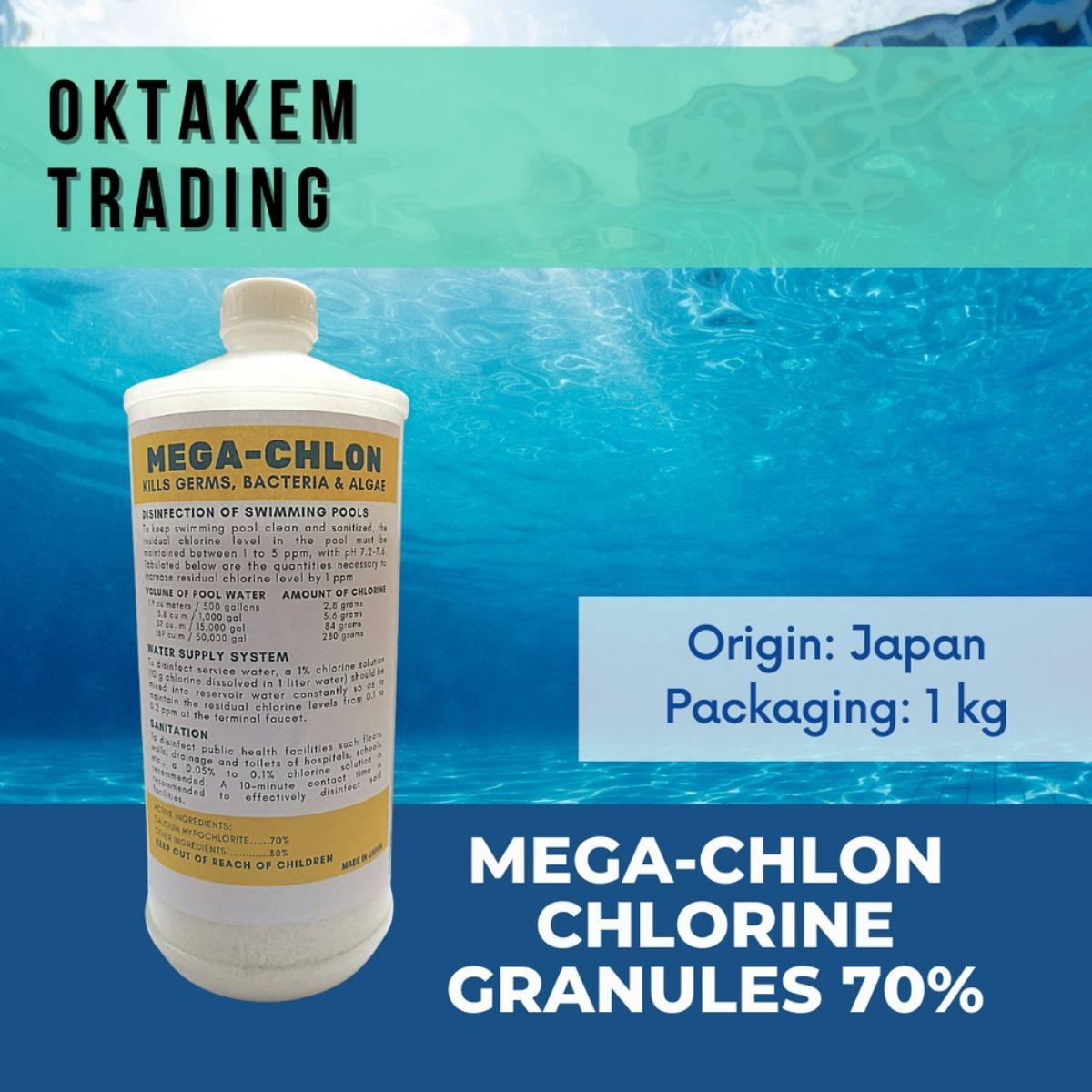
Once your chemistry levels have been balanced, you can add pool shock — a.k.a. cal hypo like our MegaChlon chlorine granules.
The general recommendation is to use 1 pound of pool shock for every 10,000 gallons of pool water. Multiply that dose depending on which kind of algae you’re dealing with:
- Green Algae: Double the recommended dose.
- Yellow and Dark Green Algae: Triple the recommended dose.
- Black Algae: Quadruple the recommended dose.
Generally, the more serious your pool algae problem, the more shock you’ll need.
Always do this step at dusk or night. If you use pool shock during the day, then the sun’s UV rays will affect your chlorine levels, which will reduce its effectiveness.
When using pool shock, remember to pre-dissolve it in a bucket of water. Once the chemical is fully dissolved, turn on your pool pump and pour the solution around the perimeter of your pool.
Keep your pool pumps and filter on for at least eight hours or overnight to properly circulate the pool shock around.
If there is still a significant amount of algae in your pool after this, repeat the brushing and shocking process.
Keep The Filters Running
After your shock treatment goes to work, it can turn your pool water cloudy — but don’t worry. It’s just algae (which turns gray when they die) particles floating in your water.
These need to be filtered out. Keep your filters on for a few more hours until the water starts to clear up. If your pool is still cloudy afterwards, use our pool clarifier — we covered how to use it in another guide. Remember to only use pool clarifier after your shock treatment has done its work!
Vacuum The Dead Algae
Use a pool vacuum to remove any dead algae that have settled on the floor and steps of your pool. This should also help clear up any other contaminants or particles from your pool. Your water levels will drop from this, so be sure to fill up your pool with fresh and clean water.
Brush and Test Daily
More stubborn algae — like dark green and black algae — will be difficult to remove. So brushing daily is an important step to making sure all algae roots are removed, and new algae won’t grow back in the same place.
Balancing your water chemistry is also key to keeping any algae problems at bay. Make sure to test your water daily as your pool gradually clears out algae spores. Adjust your alkalinity, pH, and chlorine levels as needed.
You may also want to test your cyanuric acid and calcium hardness levels since you have introduced fresh water into your pool.
Frequently Clean The Filters
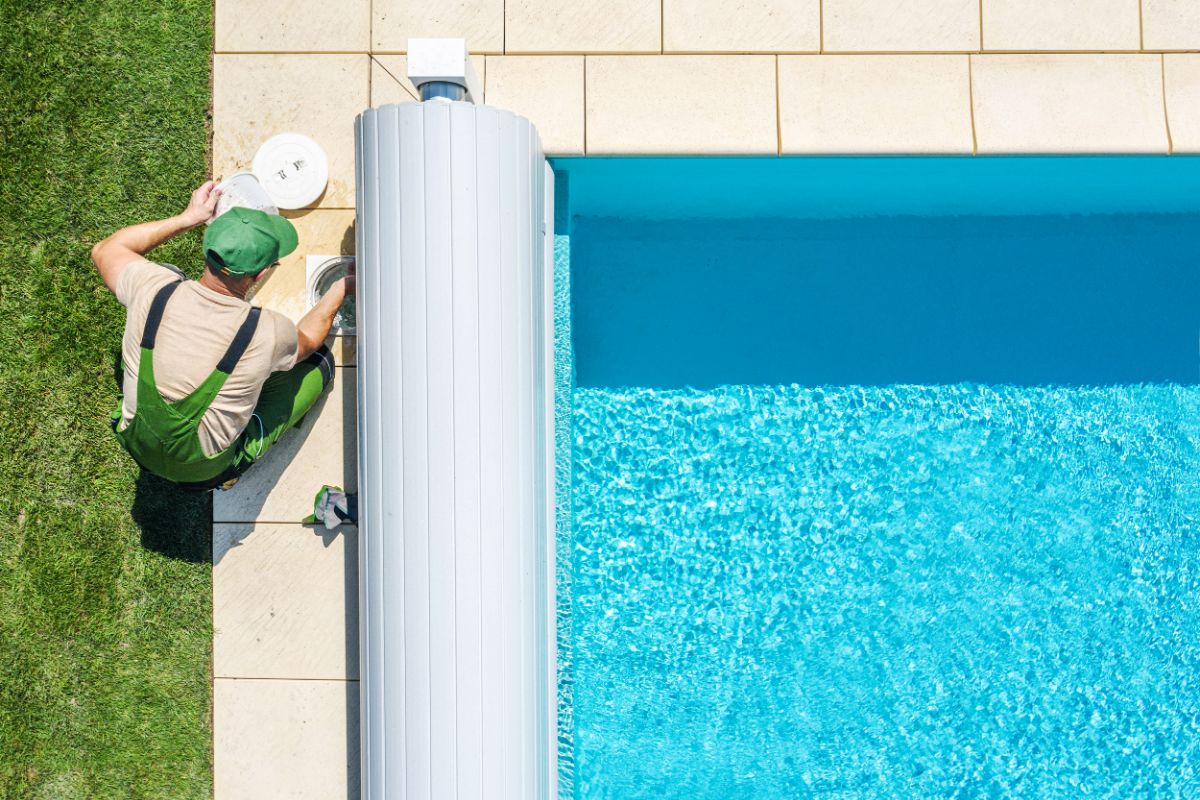
Your pool filters just handled a lot of contaminants, so they’re going to be packed with algae spores. The last thing you want to happen is your filter slowly adding these back into your pool.
Clean your filters out to remove any algae that could have settled in the grooves. If you need to deep clean, you can soak your filter cartridges in a diluted cleaning solution. Make this by mixing one cup of liquid dish soap or dishwasher detergent for every five gallons of water. Soak your filter in this for up to eight hours, before rinsing off thoroughly with a hose.
If you have sand or D.E. filter, it’s a good idea to backwash them to clean them out.
Can You Use Algaecide to Kill Pool Algae?
You can use algaecide to kill algae — but this is an expensive way of getting rid of a large algae problem. Plus, some algaecides are copper-based, so it can add a lot of copper to your pool water in the process.
So, we recommend our copper-based algaecide for early-stage algae growth, small amounts of algae, or as a preventive measure
It’s also handy for killing off lingering algae spores after a few rounds of shocking and brushing. To do this, add 0.3-0.4 ppm or 3-4 grams (almost 1 teaspoon) of algaecide per 10,000 liters of pool water. Use your pool brush to loosen any last bits of algae, and this chemical will help kill them off. Allow the algaecide to circulate for at least 24 hours before brushing and testing again.
On the other hand, our other algaecide product, GLB Algimycin 600, can be used to treat algae growth rather than pool shock.
To use GLB Algimycin 600 to treat visible algae growth, add 16 ounces per 10,000 gallons of pool water. Allow the algaecide to circulate for at least 24 hours before brushing and testing again. For maintenance, use only 3 ounces per 10,000 gallons, and apply it weekly.
Key Takeaway
If your pool is contaminated with algae, use our guide on how to remove algae from your pool to quickly and effectively deal with the problem. With our guide, you can keep your water clean and safe for everyone to enjoy — and even prevent algae from growing in your water again!
Need more assistance or supplies for your pool maintenance? Contact Oktakem today. We carry all the supplies you need, and can even fulfill bulk orders! Call us at +63933-8608708 (Smart) or +63917-8461689 (Globe) for more information.







